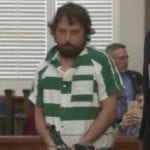 Music
Music  Music
Music  History
History 10 Less Than Jolly Events That Occurred on December 25
 Weird Stuff
Weird Stuff 10 Funny Ways That Researchers Overthink Christmas
 Politics
Politics 10 Political Scandals That Sent Crowds Into the Streets
 Weird Stuff
Weird Stuff Ten Bizarre Facts About The Doge Meme
 Our World
Our World 10 Ways Your Christmas Tree Is More Lit Than You Think
 Movies and TV
Movies and TV The 10 Coolest Stars to Set Sail on The Love Boat
 History
History 10 Things You Didn’t Know About the American National Anthem
 Technology
Technology Top 10 Everyday Tech Buzzwords That Hide a Darker Past
 Humans
Humans 10 Everyday Human Behaviors That Are Actually Survival Instincts
 Music
Music 10 Surprising Origin Stories of Your Favorite Holiday Songs
 History
History 10 Less Than Jolly Events That Occurred on December 25
 Weird Stuff
Weird Stuff 10 Funny Ways That Researchers Overthink Christmas
Who's Behind Listverse?

Jamie Frater
Head Editor
Jamie founded Listverse due to an insatiable desire to share fascinating, obscure, and bizarre facts. He has been a guest speaker on numerous national radio and television stations and is a five time published author.
More About Us Politics
Politics 10 Political Scandals That Sent Crowds Into the Streets
 Weird Stuff
Weird Stuff Ten Bizarre Facts About The Doge Meme
 Our World
Our World 10 Ways Your Christmas Tree Is More Lit Than You Think
 Movies and TV
Movies and TV The 10 Coolest Stars to Set Sail on The Love Boat
 History
History 10 Things You Didn’t Know About the American National Anthem
 Technology
Technology Top 10 Everyday Tech Buzzwords That Hide a Darker Past
 Humans
Humans 10 Everyday Human Behaviors That Are Actually Survival Instincts
10 Dastardly Crimes Of Notable Professors
Many of us, at one time or another, felt our teachers were pure evil. This was usually due to their assigning of extra homework, or their being particularly tough while grading your papers. Rarely were they actually evil, unlike the 10 below. These professors have committed various dastardly crimes both during and after their careers in education, and we should all thank the stars we never had to attend even one of their lectures.
10John White Webster
The Parkman-Webster Murder Case
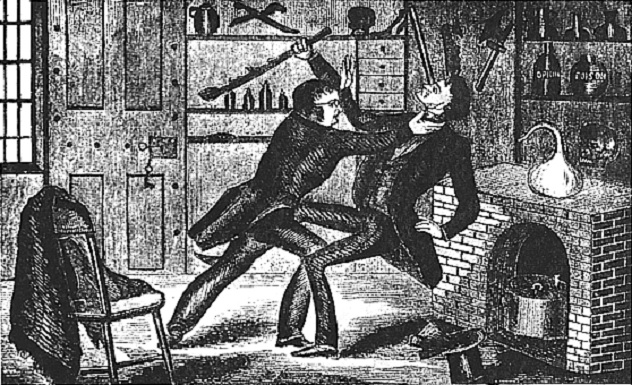
Owing to the lifestyle he led among the social elite, and the expenses he covered as a professor while lecturing chemistry, Professor John White Webster accumulated massive debts that he had virtually no chance to pay unless he borrowed heavily from his friends.
On November 23, 1849, one of these friends, George Parkman, visited him in his lab to collect payment. Webster, in a fit of anger, struck him in the head with a piece of firewood. Parkman suffered a fracture, and Webster was unable to revive him. Panicking, Webster locked the lab room’s doors and used his medical instruments to dismember Parkman’s body. He then burnt Parkman’s remains in the lab furnace.
There were no eyewitnesses, but a week later—due to his own suspicious and jittery behavior, Webster was arrested. Despite the victim’s body being long gone, a team of medical experts were able to examine the crime scene, producing valuable evidence. Webster’s trial, conviction, and execution on August 30, 1850 was one of the first cases that used forensic evidence to establish guilt beyond a reasonable doubt.
9Amy Bishop
The University Of Alabama In Huntsville Shooter
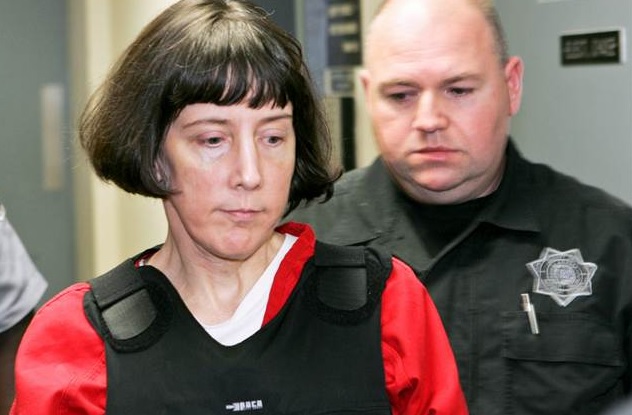
Amy Bishop was an instructor of medicine at the Harvard Medical School before teaching anatomy and neurosciences in the University of Alabama in Huntsville (UAH). On February 12, 2010, Bishop attended a faculty meeting, pulled out a handgun, and shot her colleagues, including the chairman of her department. In all, she killed three teachers and injured three more.
This wasn’t even Bishop’s first rampage. In 1986, during a family argument, she killed her brother with a shotgun blast to the chest. The case was closed due to the Bishop family claiming it was an accident. It was only reopened after the University shooting.
In addition, prior to joining the UAH, Bishop had written three unpublished novels starring protagonists who were all “scientists or aspiring scientists,” much like herself. All experienced violent daydreams, and one character even mentioned that she would bring “A gun . . . Death and destruction. Hell on earth. Horror” to a potluck hosted by her boss.
Eventually, investigators discovered the possible final straw: Bishop had been denied tenure and was supposed to wrap up her time with the institution that month. On September 24, 2012, Amy Bishop was sentenced to life without parole.
8James Keegstra
The Anti-Semitic Free Speech Advocate

James Keegstra, a public school teacher in the small town of Eckville, Alberta, Canada, might have been a little too enthusiastic in sharing his opinions to his class.
Keegstra was exceedingly open about his anti-Semitic beliefs, denying that the Holocaust ever occurred, and declaring it a mere fabrication to create sympathy for the Jews. Keegstra ingrained in the minds of his students that Jews were “thugs and gutter rats,” and that Jews conducted human sacrifice during the French Revolution. Watergate and the Vietnam War? Those were the fault of Jews as well.
Keegstra, who was also the town’s ex-mayor, was later charged by the local courts for promoting hate speech. He was fined $5,000, but he was determined to absolve his good name. He traveled to Dachau to prove a point, nonchalantly claiming that it “was not a mass extermination center.”
His appeal would eventually reach Canada’s Supreme Court in 1990, where Keegstra argued that he did not commit any crimes, but rather simply exercising his freedom of speech. Besides, he claimed, what he said could not be considered hate speech since as far as he was concerned, everything he said about the Jews was 100 percent factual.
Justices would not be dissuaded, however, citing that even if it was within his rights to speak his mind, it was harmful for the students to hear such diatribes. He was give a one-year suspended sentence, plus 200 hours of community service, in what proved to be a landmark case in the country’s legal circles.
7Anthony Blunt
The British Spy Who Sold Secrets To The Soviets
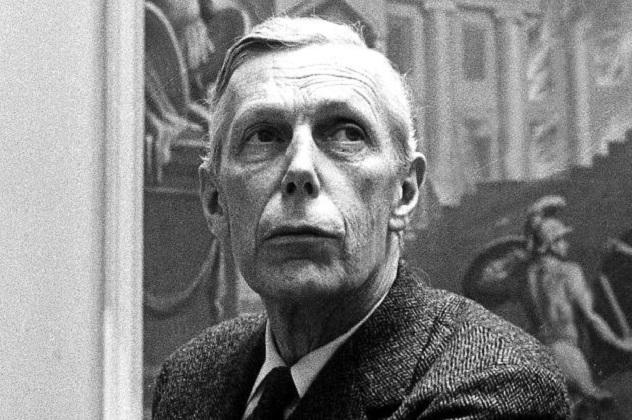
The memoirs of Anthony Blunt were hidden by the British Library since 1984, on the condition that they were to be released after 25 years.
In 2009, the memoirs were finally made public for the first time. Blunt, a professor of the History of Art at the University of London, would later become King George VI’s resident expert on all matters concerning art. While on duty, Blunt got caught up in the wave of Marxist ideals. By 1928, he had founded a magazine called Venture, meant to espouse left wing ideals. Four years later, he had become a political agent for the Soviet Union, scouting talent among the like-minded citizens of England.
During World War II, Blunt was part of MI5, handling security matters. Later, he joined the SHAEF (Supreme Headquarters Allied Expeditionary Force). Blunt was alleged to have regularly informed the Soviets of Allied advancements into Europe until 1945, when he stopped spying for them.
After the war, the Soviets encouraged him and others to defect. Blunt rejected the notion, owing to his career in the British art scene. He later confessed to his role as a Soviet spy in 1964 in exchange for immunity . This matter was kept secret from the public until exposed by Margaret Thatcher in 1979, naming him the “Fourth Man” in the KGB’s “Magnificent Five.” After this exposure, Blunt contemplated committing suicide, but instead focused on writing books on art. He died a broken man on March 26, 1983.
6Diederik Stapel
His Many Fake Experiments
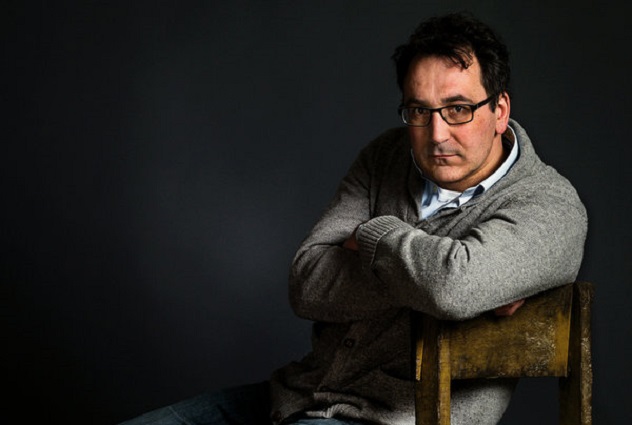
Diederik Stapel, a Dean at Tilburg University in the Netherlands, was a rising star in the academic world. For many years, he published numerous studies on human behavior. Did you know that a trash-filled environment brings out racial tensions? How about the fact that eating meat makes people selfish and less sociable? And did you know people tend to feel smarter after a relative wins an award?
Stapel’s fascinating studies provided insights in the human psyche and garnered him a stellar reputation throughout the country and in international academic circles. Too bad just about every study he did was 100 percent bologna.
In 2011, Stapel was approached by a colleague after two students made accusations regarding the professor’s falsified reports. Stapel initially blamed this on jealous rivals in the university. When later confronted by the rector with over 55 falsified papers with his name on them, Stapel defended himself by highlighting his work for the institution and mentioning that his research methods were merely unusual.
Eventually, Stapel visited some of the locations he used for his previous experiments. He was forced to note that they were totally unlike how he himself described them in his publications. Stapel knew the jig was up when he could not even convince himself of his activities. Later that night he confessed to his wife, and a week later he was suspended by the university, which announced his fraud via news conference. Stapel has since expressed sincere remorse for his actions.
5Mohammad Sarwar
A Real-Life Walter White
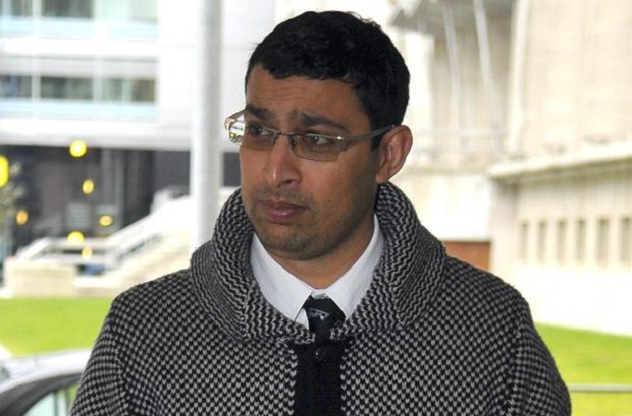
Mohammed Sarwar , a former IT professor at Burnage Media Arts College in Manchester, was one of the institution’s most notable educators, as well as a tireless community organizer and project participant. He also happened to lead a double life as a drug lord.
Sarwar led a gang who unimaginitively dubbed him “The Teacher.” They bought large quantities of cocaine and cannabis, selling them all around Manchester. But unlike fictional drug-dealing professor Walter White from Breaking Bad, Sarwar had no intention of ever getting his hands dirty. He very rarely touched the drugs himself, simply managing and coordinating the operation from behind the scenes, while taking a substantial cut of the profits, naturally.
While no significant quantities of the drugs were ever seized, witnesses came forward testifying that Sarwar and his gang supplied drugs to a local prison. Sarwar has since been caught, convicted, and sentenced to 21 years in prison.
4John Yoo
The Man Behind United States Torture Memos
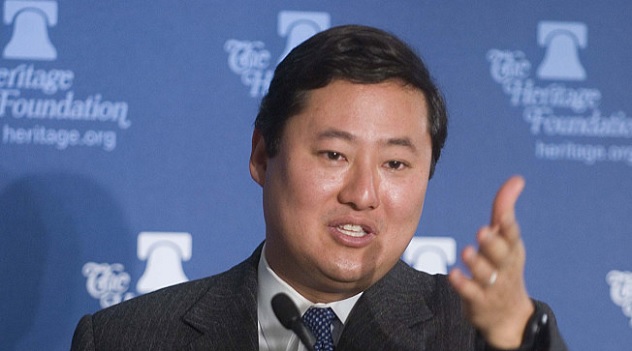
John Yoo and his parents immigrated to America while he was a child. He eventually graduated summa cum laude from Harvard in 1989, later becoming a law professor at the University of California, Berkeley in 1993.
When the 9/11 attacks occurred, Yoo was the deputy assistant attorney general in the Office of Legal Counsel at the United States Department of Justice. In the weeks after the attacks, Yoo became one of the department’s biggest players, spearheading massive changes to the powers of the government with regards to the use of torture on prisoners. These were collectively known as the “Torture Memos.”
Yoo’s expertise in law subverted those laws already in place, such as the ones giving the Geneva Convention power to enforce anti-torture laws around the globe. Yoo found the necessary loopholes to allow his government to sidestep international law and torture suspected terrorists legally.
Apart from legalizing torture, John Yoo also justified the Bush administration’s warrantless wiretapping program, which he has since defended as “the best way to find an Al-Qaeda operative, by looking through all email, text and phone traffic between Afghanistan, Pakistan and the United States.”
Despite these controversies, Professor Yoo remains a faculty member at UC Berkeley, has lectured in the University of Chicago, has held the Fulbright Distinguished Chair in Law at the University of Trento, and was even awarded for his excellence in legal scholarship and teaching by the Federalist Society for Law and Public Policy.
3Franz Six
The Brilliant Nazi Educator
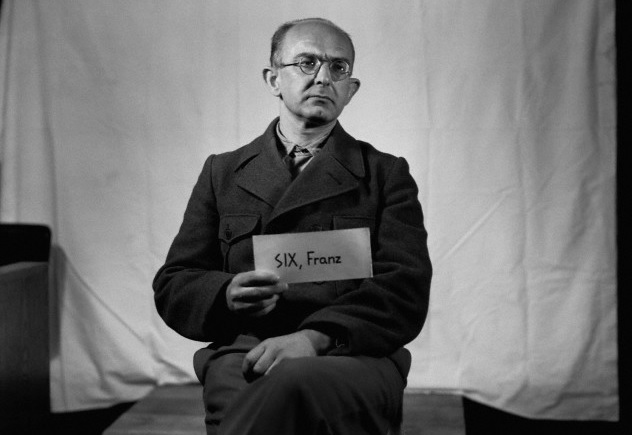
Franz Six was a Doctor of Philosophy who taught at the University of Konigsberg. He was also the chairman of Foreign Political Science at the University of Berlin, and was its first Dean of the Faculty for Foreign Countries.
Along with his achievements in the academic world, Franz Six was also a member of the German Schutzstaffel (SS), eventually making rank as SS-Brigadefuhrer (the equivalent of a United States brigadier general). Reinhardt Heydrich, one of the most vicious men in the Nazi hierarchy, even appointed him the head of a department tasked to create anti-Semitic, anti-masonic propaganda.
Aside from Jews and other “enemies of the state,” Six’s department also studied prominent figures among the Allies. Their names were written down in a “Black Book” for imprisonment, exile, or execution. Had “Operation Sea Lion” (the Nazi invasion of Britain) succeeded, Six would have commanded several SS death squads. They would have rounded up and liquidated their Black Book targets, which numbered over 2,800 people.
With the failure of the invasion, Hitler turned his eyes on the Soviet Union. In Russia, Franz Six led a team of SS thugs, dubbed the Einsatzgruppen, who massacred hundreds in Smolensk, including several Jewish intellectuals.
In 1948, Six was captured and put on trial. However, attempts to link him to the atrocities in Russia, as well as alleged plans for Britain, all failed. He was sentenced to decades of imprisonment but was released just four years later.
2Alberto Fujimori
Peruvian Death Squads
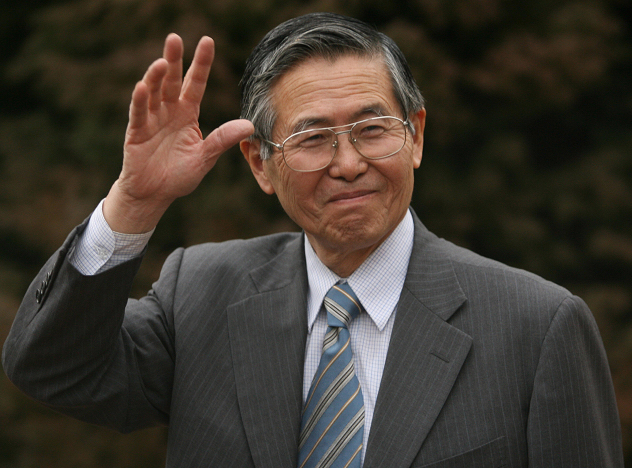
Alberto Fujimori was the son of Japanese citizens who immigrated to Peru. In 1961, he graduated from the Universidad Nacional Agraria in Lima, pursuing his graduate studies at the University of Wisconsin and University of Strasbourg in France. After returning to Peru, he rejoined his alma mater, becoming its dean and rector from 1984 to 1989.
In 1990, Fujimori won the Peruvian presidency through his fierce rhetoric and criticism of “economic shock tactics.” Unfortunately, just two weeks after taking office, he would resort to a shock tactic of his own: raising the price of gasoline from US$0.13 to US$4, an increase of over 3,000 percent. This triggered massive levels of extra hardship for Peru’s many already-poor citizens. The process has come to be known as “Fujishock.”
Critics have also cited that Fujimori authorized the activities of the Grupo Colina, a death squad who would kidnap suspected rebels in the middle of the night, execute them, and bury their corpses in the middle of nowhere. Grupo Colina has also been linked to the murders and disappearances of various trade union members and political activists who earned the ire of the president.
Many of Fujimori’s atrocities remained secret until 2000. Allegations of bribery then led to the public discovering their president tasked his intelligence chief with spying on his rivals, as well as strong-arming the media and judiciary.
Fujimori quickly fled to Japan to let the public outrage simmer, though he returned to Peru in 2005, hoping to reclaim his position. Originally landing in Chile, he was immediately detained by Chilean officials at the request of Peruvian authorities. He has since been convicted of human rights abuses and sentenced to 25 years in prison.
1Gwangju Inhwa School Professors
The Gwangju Mass Rape Incident

Over the years, we may have become accustomed (sadly) to stories of teachers having sex with their pupils. But no case approaches the Gwangju Incident in South Korea for sheer horror. From 1996–1997 and then from 2000–2007, a total of six teachers molested and raped their students in the Gwangju Inhwa School, a school for the hearing impaired no less. The culprits who abused the disabled children were not just regular faculty members—they included the principal and administrative head of the school as well!
When one of the teachers learned of these acts, the police were brought in to arrest the perpetrators, all of whom received a conviction. Sadly, due to legal loopholes and expired statutes of limitations, some of the convicts’ sentences have either been reduced or thrown out completely. The administrative head was actually released and given probation. Other faculty members were reportedly given a short term in prison and were even allowed to work in the school again afterward.
The movie and novel Dogani (“The Crucible” in English) graphically detailed the heinous act and enraged the populace. Over 50,000 people signed petitions to reopen the case and possibly shut down the school entirely. The South Korean Parliament almost unanimously ruled to approve tougher laws against sex crimes and those targeting minors and the disabled. As for the Gwangju Inhwa School, it mercifully closed for good in 2011.
Got stories of evil professors you’d like to share? Talk to Jo via email or in the comments section.







